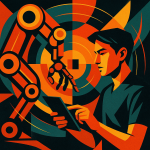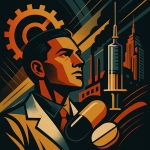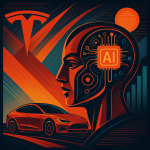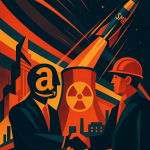Key Points
- NVIDIA is set to unveil a new robot “brain” on August 25, 2025, with a teaser showing Jensen Huang’s note “To robots: Enjoy your new brain!”.
- NVIDIA recently released Cosmos Reason, an open-source physical AI application and robot visual reasoning model, enabling robots to “reason like humans” and perform real-world actions.
- Jensen Huang emphasizes “Physical AI” as the next wave, focusing on models for autonomous machines to understand and interact with the real world through motor skills.
- The physical AI market has trillion-dollar potential, with significant investment from major players like Huawei (华为), ByteDance (字节), BYD (比亚迪), Xiaomi (小米), Tesla, and Figure AI, driving the “blossoming and contending” phase of the humanoid robot industry.

NVIDIA robot brain is the short, irresistible headline this week for investors, founders, and robotics builders.
NVIDIA (Yingweida 英伟达) robotics posted a teaser on social media asking, “Do you have time? August 25, 2025.”
The promo included a black gift box and a card signed by Jensen Huang (Huang Renxun 黄仁勋).

Resume Captain
Your AI Career Toolkit:
- AI Resume Optimization
- Custom Cover Letters
- LinkedIn Profile Boost
- Interview Question Prep
- Salary Negotiation Agent

What the teaser showed
Two days before the announcement, NVIDIA released a short preview video.
In the clip, Jensen Huang leans over and writes on a card, “To robots: Enjoy your new brain!”
The camera cuts to a humanoid robot reading the card in front of the gift box.
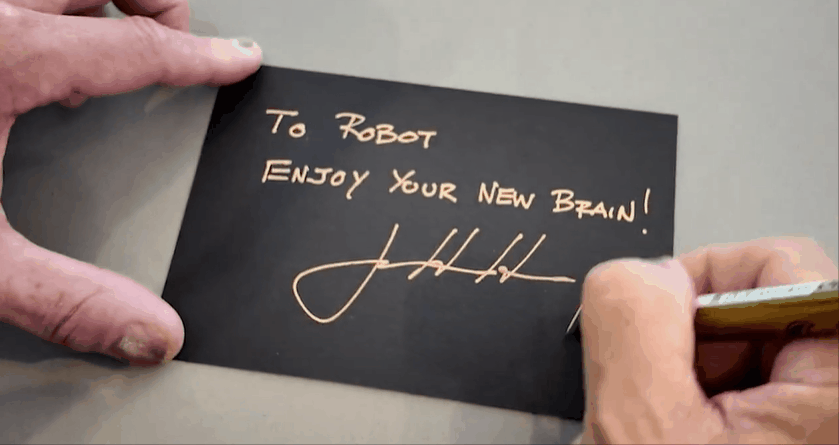

Find Top Talent on China's Leading Networks
- Post Across China's Job Sites from $299 / role, or
- Hire Our Recruiting Pros from $799 / role
- Qualified Candidate Bundles
- Lower Hiring Costs by 80%+
- Expert Team Since 2014
Your First Job Post

Cosmos Reason: the model behind “reasoning” robots
At SIGGRAPH on August 12, NVIDIA released an open-source physical AI application and robot visual reasoning model called Cosmos Reason.
NVIDIA explains that Cosmos Reason enables robots to “reason like humans” by combining existing knowledge and concepts, then taking responsive actions in the real world.
One demo showed a robotic arm interpreting a “bread + toaster” situation, inferring the sensible next step—placing the bread into the toaster—and converting that reasoning into operational commands.

ExpatInvest China
Grow Your RMB in China:
- Invest Your RMB Locally
- Buy & Sell Online in CN¥
- No Lock-In Periods
- English Service & Data
- Start with Only ¥1,000

Why Jensen Huang calls this “Physical AI”
Jensen Huang has repeatedly said, “The next wave is physical AI.”
He frames AI’s history as moves from Perception AI to Generative AI to Agentic AI, with the next frontier being Physical AI—the era of robots that act in the real world.
NVIDIA defines Physical AI as models that use motor skills to understand and interact with the real world, typically inside autonomous machines like robots and self-driving cars.
With Physical AI, autonomous machines can perceive, understand, and perform complex operations in real environments.

Trillion-dollar market potential and industry momentum
At the 2025 World Robot Conference, Rev Lebaredian, VP of NVIDIA Omniverse and Simulation Technology, said physical AI could unlock a market worth trillions of dollars.
The robotics industry is seeing multi-faceted progress across technology, practical application, and standards, driven by intense development both in China and overseas.
Notable players investing more in embodied intelligence include:
- Huawei (Huawei 华为)
- ByteDance (Zijie Tiaodong 字节)
- BYD (Biyadi 比亚迪)
- Xiaomi (Xiaomi 小米)
- GAC (Guangqi 广汽)
- Overseas examples accelerating commercialization include Tesla, 1X, and Figure AI.
Analysts highlight DeepSeek (DeepSeek Rengong Zhineng 智谱AI) as a driver of general-purpose robot large models that help humanoid robots reach embodied intelligence.
The humanoid robot industry chain is entering a “blossoming and contending” phase, with industrial integration and commercialization of humanoid robots seen as a high-probability trend globally.

What this means for investors, founders, and builders
If you’re watching the robotics space, focus on a few clear areas of opportunity and risk.
Key opportunities:
- Component suppliers for actuators, sensors, and compute are likely to benefit as robot adoption scales.
- Simulation and digital twin platforms like NVIDIA Omniverse matter because they speed development and reduce hardware costs for testing.
- Software and model tooling that convert high-level reasoning (like Cosmos Reason demos) into safe, reliable robotic actions.
- Vertical integration plays—from automakers to consumer electronics companies—could leverage existing manufacturing scale for fast deployment.
Key risks and watch points:
- Hardware bottlenecks for power, sensors, and lightweight actuation remain a gating factor for humanoid robots.
- Standards and safety will shape commercialization speed and regulatory timelines across regions.
- Commercial product-market fit is still being proven for humanoid robots outside narrow industrial scenarios.

- Founders: Build modular systems that allow customers to update reasoning models without replacing the entire robot.
- Investors: Pay attention to component suppliers, simulation platforms, and companies releasing open models, as these represent immediate leverage points.
- Tech Teams: Prioritize creating reproducible simulation-to-real pipelines and implementing robust failure modes when converting abstract reasoning into physical actions.
- Marketers: Develop narratives around embodied intelligence using demonstrations that showcase reliable and repeatable value in real-world applications.
Quick takeaways for strategy
- Founders: Build modular systems that let customers upgrade reasoning models without swapping the whole robot.
- Investors: Track component suppliers, simulation platforms, and companies publishing open models—these are near-term leverage points.
- Tech teams: Prioritize reproducible simulation-to-real pipelines and robust failure modes when converting reasoning to actuation.
- Marketers: Tell the story of embodied intelligence with demos that show reliable, repeatable value in real-world tasks.
Final thought
NVIDIA’s tease and the Cosmos Reason release signal a clear, industry-wide pivot toward Physical AI and embodied intelligence.
Watch product reveals, partnerships, and the domestic and international humanoid robot industry chain for the earliest commercial signals.
NVIDIA robot brain is no longer just a metaphor—it’s becoming a product category investors and builders should plan around.


